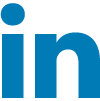Derek Kohalmi on behalf of Pharus Wealth Advisory Group
July 30, 2024
Financial literacyA Guide to Investment Accounts in Canada
Investing is a key component of financial planning, and Canada offers a variety of accounts to help individuals save for different goals. Each account type has its own purpose, tax implications, and benefits. Let’s explore the main types of investment accounts available in Canada: RRSP, TFSA, Non-Registered Accounts, FHSA, RESP, and RDSP.
1. Registered Retirement Savings Plan (RRSP)
Purpose: The RRSP is designed to help Canadians save for retirement. Contributions to an RRSP are tax-deductible, which means they can reduce your taxable income for the year.
Tax Implications: The money in an RRSP grows tax-free until it is withdrawn. Withdrawals are taxed as income, ideally at a lower rate during retirement when your income is typically lower.
2. Tax-Free Savings Account (TFSA)
Purpose: The TFSA is a flexible savings account that allows Canadians to save and invest money tax-free for any purpose, whether it’s for a rainy day, a big purchase, or retirement.
Tax Implications: Contributions to a TFSA are made with after-tax dollars, but any income earned within the account (interest, dividends, capital gains) is tax-free, and withdrawals are also tax-free.
3. Non-Registered Investment Accounts (Individual or Joint)
Purpose: These accounts are not registered with the government and do not have the same tax advantages as registered accounts. They are used for general investing purposes.
Tax Implications: Income earned in non-registered accounts is subject to taxation. Interest income is taxed at your marginal tax rate, dividends receive a dividend tax credit, and capital gains are taxed at 50% of your marginal tax rate.
4. First Home Savings Account (FHSA)
Purpose: The FHSA is designed to help Canadians save for their first home. It combines features of both the RRSP and TFSA.
Tax Implications: Contributions to an FHSA are tax-deductible, and withdrawals used for purchasing a first home are tax-free. Investment income earned within the account is also tax-free.
5. Registered Education Savings Plan (RESP)
Purpose: The RESP is intended to help parents save for their children’s post-secondary education. The government also provides grants to match contributions up to a certain limit.
Tax Implications: Contributions are not tax-deductible, but the investment income grows tax-free. Withdrawals for educational purposes are taxed in the hands of the student, who typically has a lower income and thus pays little to no tax.
6. Registered Disability Savings Plan (RDSP)
Purpose: The RDSP is designed to help parents and others save for the long-term financial security of a person with a disability.
Tax Implications: Contributions are not tax-deductible, but the investment income grows tax-free. Withdrawals are partially taxable, depending on the source of the funds (contributions vs. government grants and bonds).
7. Corporate Investment Account
This is a taxable account and below is a concise summary of the key points regarding corporate investing and tax integration in Canada:
Tax Differences Between Individuals and Corporations:
Individuals are taxed based on a progressive income tax system, while corporations face a flat rate (around 50% in Ontario) on passive investment income.
Passive income tax rates for corporations are high to prevent unfair tax advantages from investing within them.
Tax Integration Mechanisms:
Refundable Dividend Tax on Hand Account (RDTOH):
RDTOH ensures that some of the high corporate taxes on investments are “released” back to the corporation when dividends are paid to shareholders.
This prevents double taxation when you receive dividends personally.
Capital Dividend Account (CDA):
When you earn capital gains inside your corporation, two-thirds is included in the corporation’s income for tax purposes and the rest is tax-free. Previously 50% was the inclusion rate (changed in June, 2024). The tax-free portion goes into the CDA, which allows tax-free dividend payouts to shareholders.
There are other financial components which form part of the CDA, one prominent example is the benefit from Life Insurance Policy, if structured properly.
Fairness and Tax Efficiency:
Tax integration attempts to ensure fairness whether you earn income personally or through a corporation. Despite differences across provinces, integration is aimed to create tax parity for private corporation owners.
Conclusion
Understanding the different types of investment accounts in Canada and their purposes can help you make informed decisions about where to allocate your savings. Each account type offers unique benefits and tax implications, so it’s important to choose the right mix based on your financial goals and needs. Remember to consult a financial advisor to tailor your strategy based on your unique situation.




